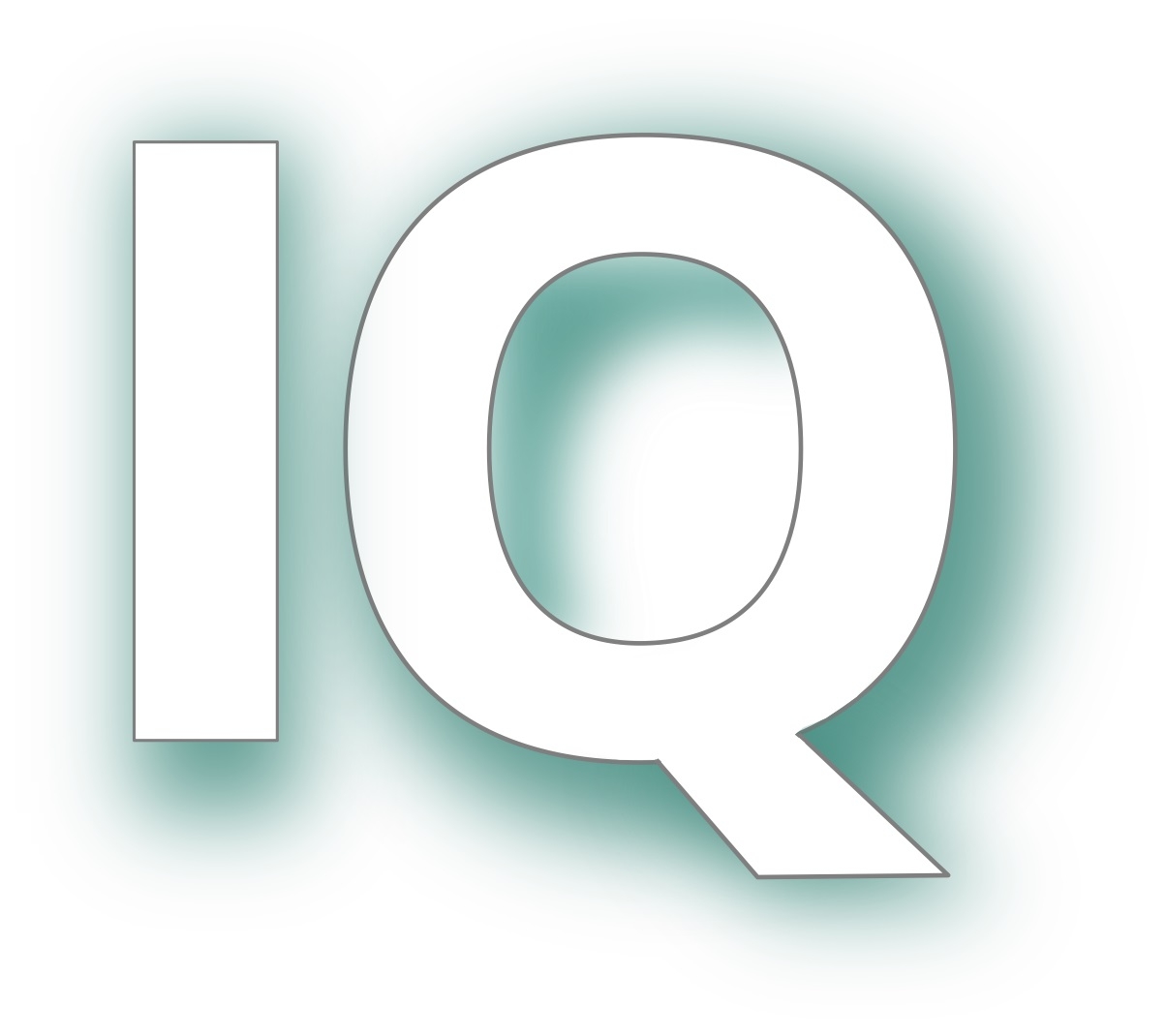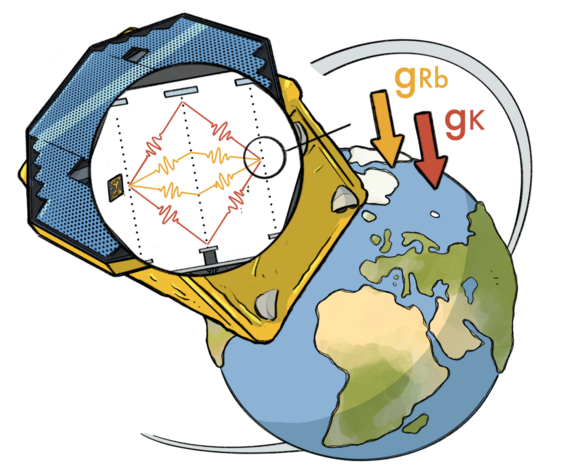
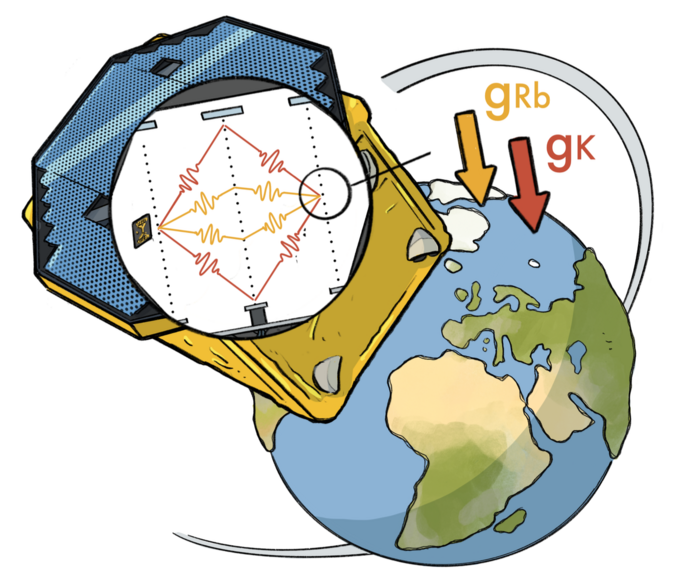
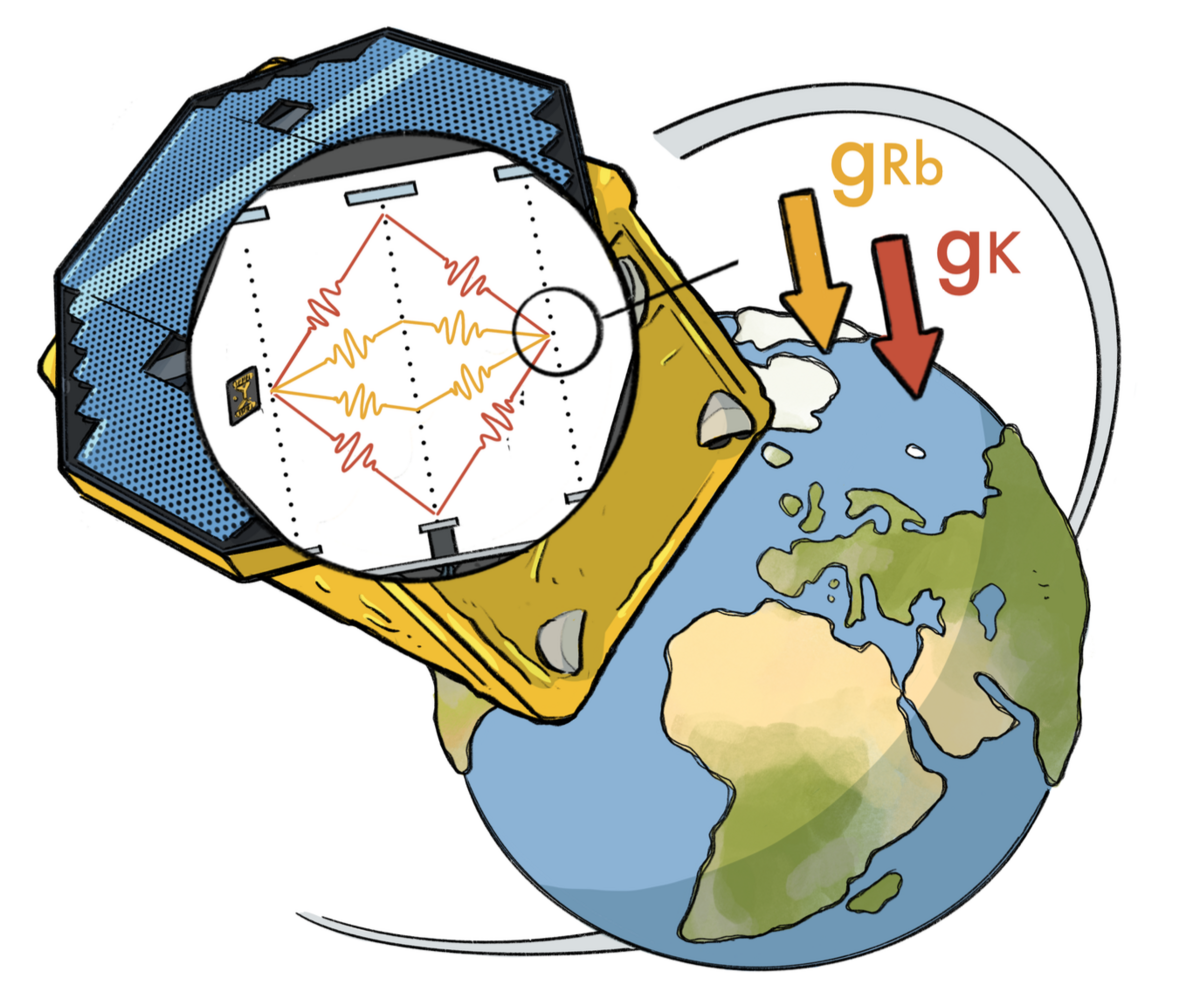
Inertial Sensing in Space
Quantum sensors based on the interference of matter waves provide an exceptional measurement tool for inertial forces. They are considered as the next generation of gravimeters and accelerometers for applications in geodesy or fundamental physics due to the absence of drifts. Space-borne atom interferometers promise to exploit the full potential of these sensors thanks to the long free-fall times and the absolute nature of the measurement to reach unprecedented sensitivity at low frequencies [Lévèque, T., et al. "Gravity field mapping using laser-coupled quantum accelerometers in space." Journal of Geodesy 95 (2021): 1-19.].
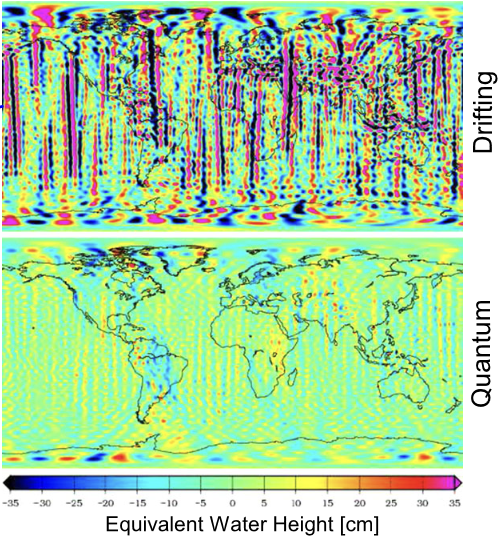


Fundamental Physics in Space
Fundamental physics tests often require cutting-edge technologies and innovative experimental designs. Due to the exceptional environment in space, atom interferometers are expected to outperform state-of-the-art ground-based experiments as well as the current best classical measurements.
The STE-QUEST mission scenario aims to test the universality of free fall up to the $10^{-17}$ level using a space-borne dual-species atom interferometer [Bassi, Angelo, et al. "STE-QUEST: Space Time Explorer and QUantum Equivalence principle Space Test." arXiv preprint arXiv:2211.15412 (2022).]. Secondary objectives include the test of quantum mechanics and the search for dark matter, made possible by long interrogation times. To ensure mission success, a thorough systematic analysis was conducted to define platform requirements and estimate performance levels, as outlined in the project proposal [XXX], which is competing in the frame of a Medium-Class mission at ESA’s science program [https://sci.esa.int/web/ste-quest].



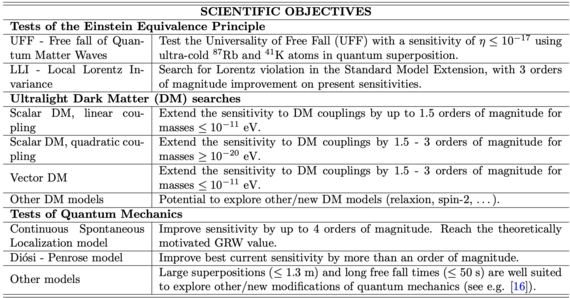
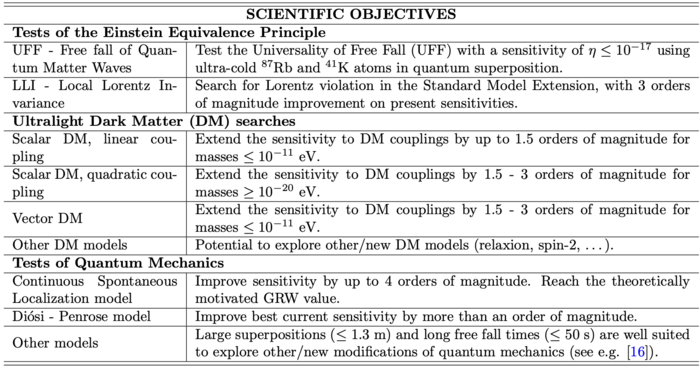
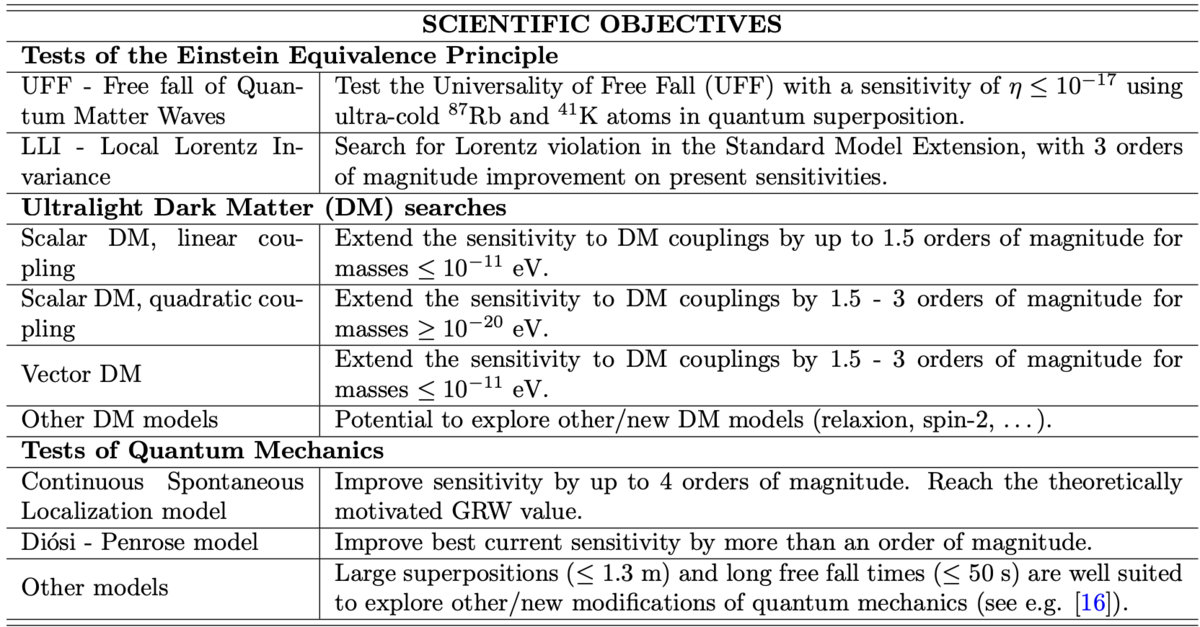
Earth Observation and Space Geodesy
Another promising application of space-based quantum sensors is Earth observation and space geodesy. These sensors excel in delivering highly sensitive, drift-free measurements at low frequencies, addressing the limitations encountered by classical sensors that are prone to bias drift and require frequent recalibrations. This paves the way for a hybrid sensor, highly sensitive at a wide frequency spectrum.
The CARIOQA-PMP (Cold Atom Rubidium Interferometer in Orbit for Quantum Accelerometry – Pathfinder Mission Preparation) EU project is dedicated to advancing quantum sensors for satellite-based Earth science applications, with a specific focus on monitoring climate change [Lévèque, T., et al. "Carioqa: Definition of a quantum pathfinder mission." International Conference on Space Optics—ICSO 2022. Vol. 12777. SPIE, 2023., https://carioqa-quantumpathfinder.eu]. Its primary mission objective is to raise the Technology Readiness Level (TRL) to 5 and allow to launch a quantum pathfinder mission during the current decade. The project includes collaborations with 17 partners spanning industry and research institutions across Europe, spearheaded by the German Aerospace Center (DLR) and the French Space Agency (CNES), underscoring the importance of international cooperation in addressing critical environmental challenges.

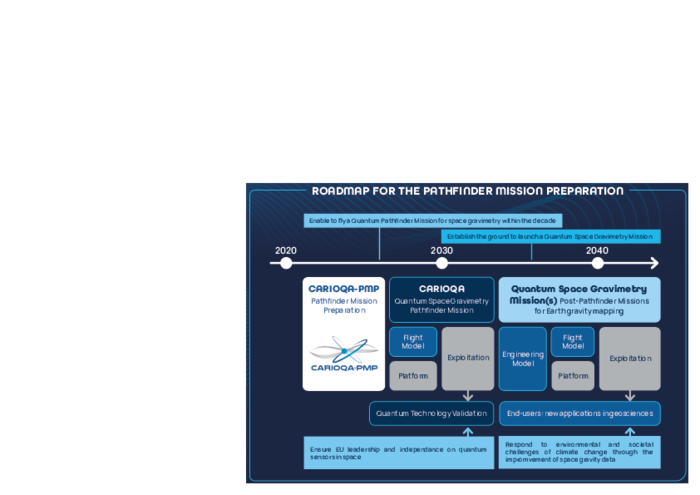
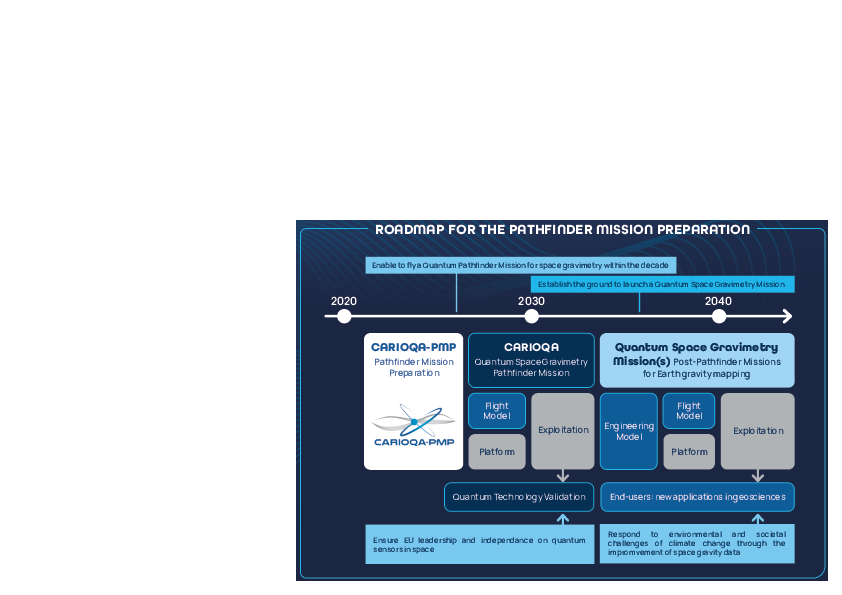
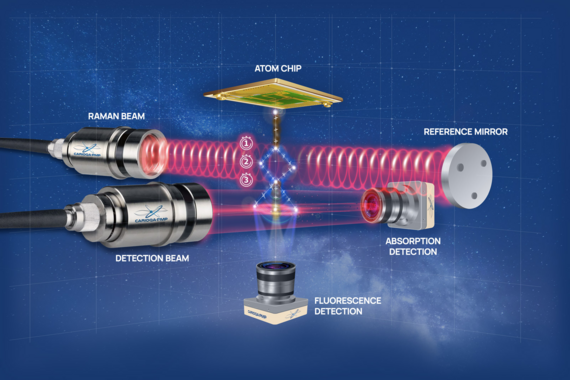
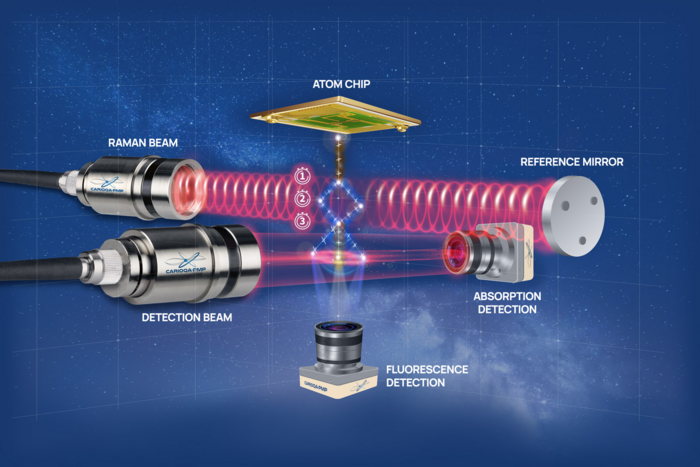
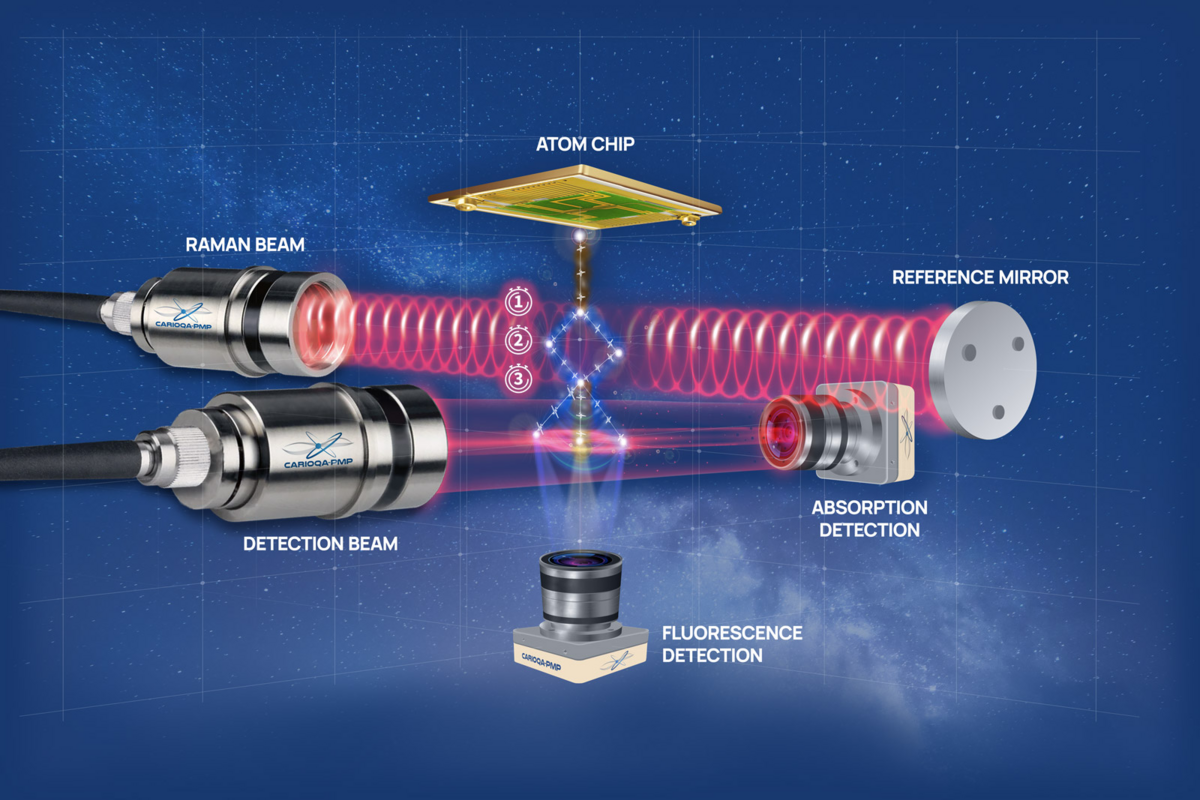
Scenario Building and Satellite Simulator (SQUID)
To consolidate the performance and the precise scientific goals of a mission embarking a space-borne quantum sensor, thorough simulations are required. SQUID (Satellite-based QUantum systems for Inertial sensing and Discovery of new physics) is a satellite simulation tool developed to this end to perform mission analysis studies of space-borne quantum sensors. This includes simulations of the sensor itself, the satellite’s orbit and attitude, as well as a realistic model of Earth’s gravitational potential for a detailed mission scenario study. SQUID was successfully applied for the STE-QUEST proposal and mission scenario studies for a Quantum Pathfinder, e.g., envisaged by the European Commission by the end of this decade.
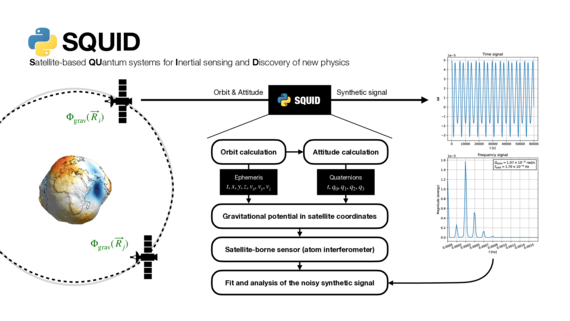
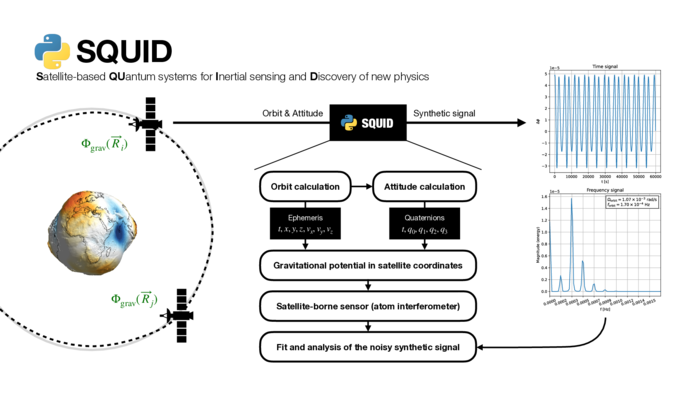
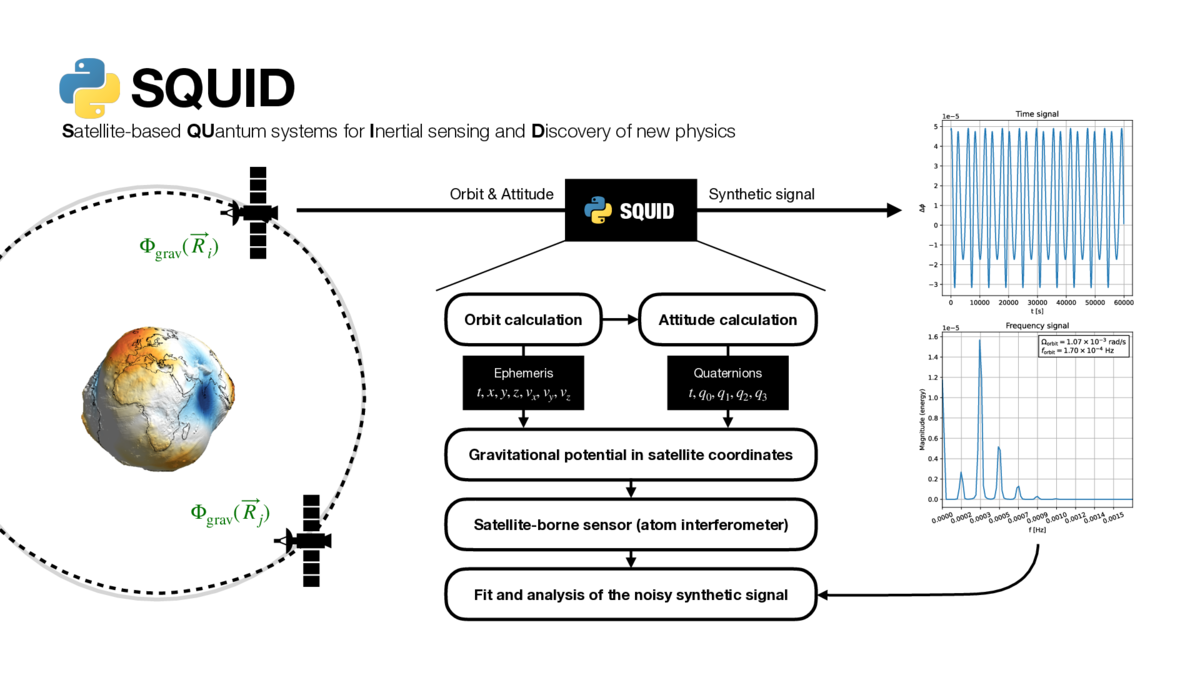
Funding



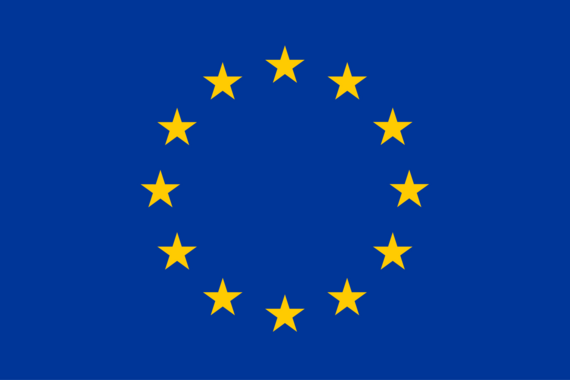
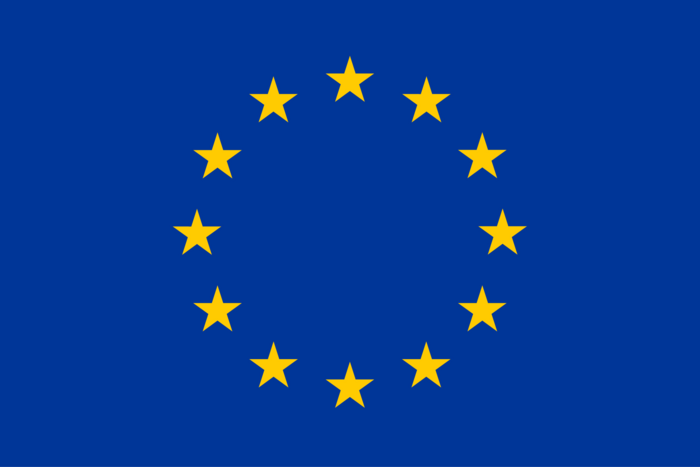
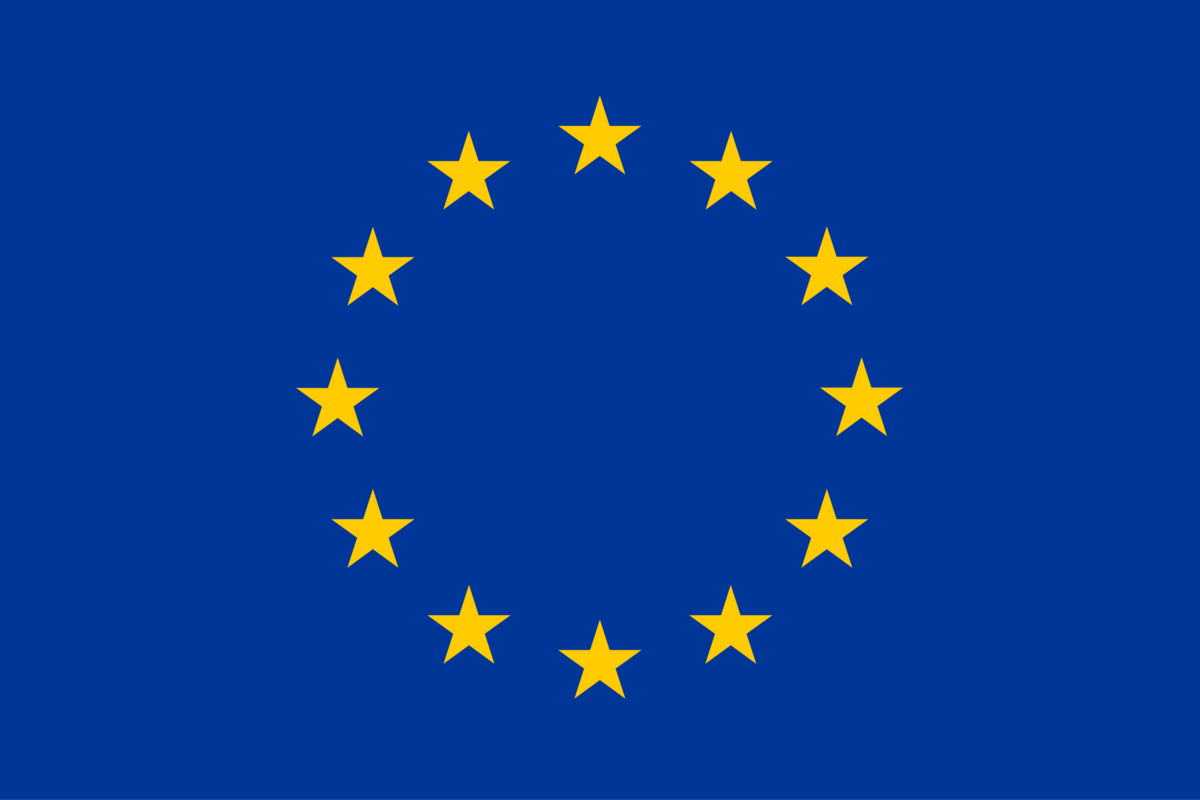
This project is funded by the Deutsche Forschungsgemeinschaft (German Research Foundation) under Germany’s Excellence Strategy (EXC-2123 QuantumFrontiers Grants No. 390837967) and through CRC 1227 (DQ-mat) within Projects No. A05, and the German Space Agency at the German Aerospace Center (Deutsche Raumfahrtagentur im Deutschen Zentrum für Luft- und Raumfahrt, DLR) with funds provided by the German Federal Ministry of Economic Affairs and Climate Action due to an enactment of the German Bundestag under Grants Nos. 50WM2250A and 50WM2250E (QUANTUS+), No. 50WP1700 (BECCAL), No. 50WM2245A (CAL-II), No. 50WM2263A (CARIOQA-GE), No. 50WM2253A (AI-Quadrat), No. 50RK1957 (QGYRO), No. 50WM2177 (INTENTAS), as well as No. 50NA2106 (QGYRO+).
